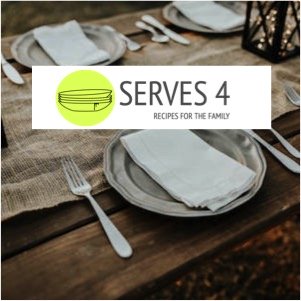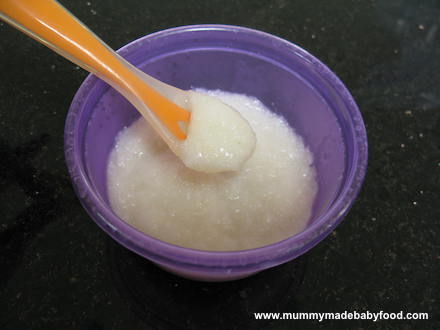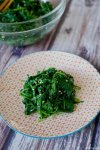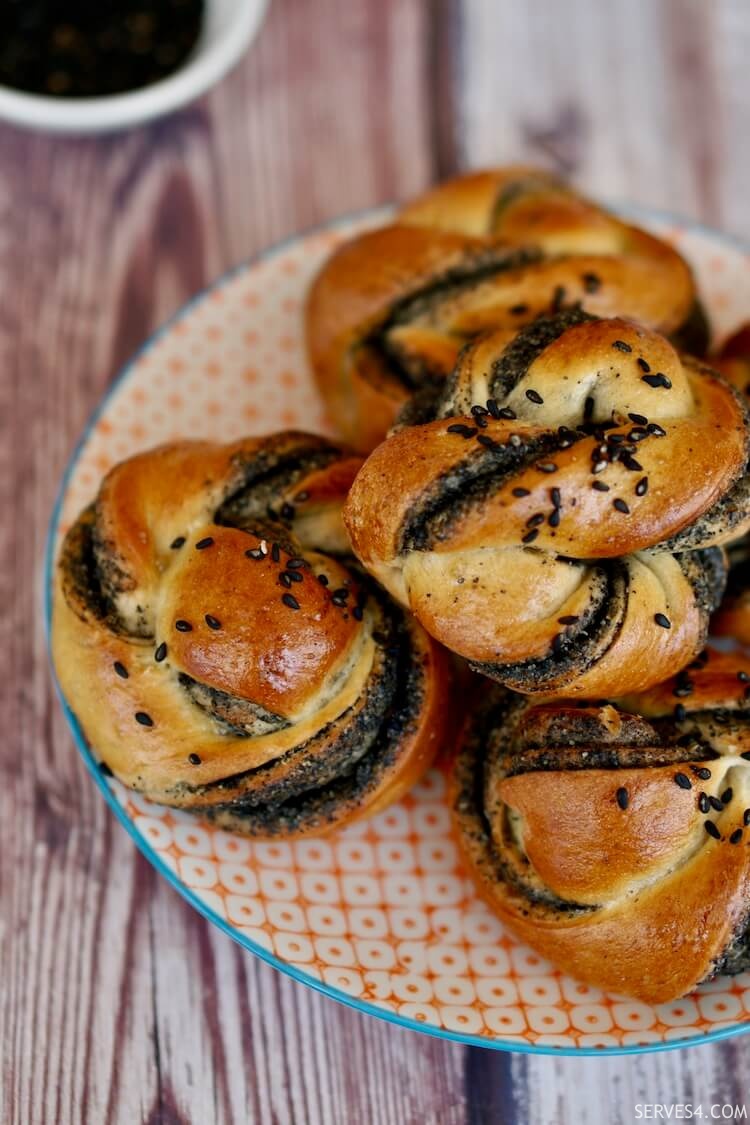- Serves 4
- 10-12 Months
Stage 3 Baby Food
This page may contain affiliate links, which means we receive a small commission for purchases made using the links. There is no additional cost to you. Please read our full disclosure policy.
When is baby ready to move onto Stage 3 weaning?
Baby may be ready to move onto Stage 3 baby food if he is approximately 10 months old and has been happily eating soft foods of thicker consistency with small lumps in it. He should also be enjoying finger foods and trying to self-feed with a spoon. During Stage 3 weaning, baby should be ready to adopt a more adult-style of eating.
Babies of this age start to take pleasure in their food, so you should always aim to keep meal times light and pleasant. Varying the foods he eats will also help keep him interested in his meals. You should continue to avoid adding salt or sugar to your baby’s food during Stage 3.
As your baby begins to engage more with others around him, meal times should be seen as a social occasion. Try to eat at least one meal together as a family – I found breakfast the easiest to fit into busy schedules. Allowing your baby to observe you eat will also teach him table manners.
What is Stage 3 baby food?
Stage 3 baby food is all about continuing to explore new flavour combinations and textures, while at the same time refining eating techniques. Finger foods continue to feature large, and you can start moving onto ones with a harder texture – if you have followed Stage 2 weaning, your baby will already have been introduced to some basic finger foods.
Stage 3 baby food should be coarsely mashed or chopped into small pieces. Baby should be encouraged to eat lumpier foods, as this will help him develop his jaw muscles and chewing skills. Don’t worry if your baby doesn’t have many teeth yet, you’ll be amazed at how well he can chew with his gums!
During Stage 3, baby should still be drinking between 18-21 ounces (500-600ml) of milk per day, including the milk used in preparing his meals. By the time he reaches 12 months, he should be enjoying 3 well-balanced meals a day and drinking a minimum of 12 ounces (350ml) of milk.
You can begin to incorporate even stronger tasting flavours, such as salmon or lamb, into Stage 3 baby food. Again, start gradually by introducing these in pies or casseroles before offering them on their own. Many toddlers dislike the taste of fish, so the earlier you can train his taste buds to accept the flavour, the easier a time you will have later on!
If your family enjoys spicy foods, you can also begin gently introducing these to baby. Start with a mild curry or chilli powder, and use sparingly – much less than you would in your own food. Increase the amounts very slowly, but only after you have established that baby has no intolerances and is happy eating the spice.
As your baby starts drinking less milk in his diet, make sure you keep up his fluid intake by offering him water or well-diluted juice throughout the day. During meal times, try to only offer baby a drink after he has eaten most of his food, so that drinking liquids does not decrease his appetite for food.
From the age of 1 year, try not let baby drink more than 21 ounces (600ml) of milk per day, as this could decrease his appetite for solid food. Drinking too much milk could lead to nutritional deficiencies, as milk no longer provides sufficient nutrition, and your baby needs the nutrients from solids to grow healthy. Giving your baby milk from a beaker or sippy cup will limit the amount he drinks - introduce this gradually until he is used to drinking most or all of his drinks from a beaker or sippy cup by the age of 1.
How to move onto Stage 3 baby food?
Babies moving onto Stage 3 baby food are generally beginning to show use of their fine motor skills. You can encourage your baby’s development of these skills by including finger foods at each meal. For example, you could give baby some chopped fruit with his breakfast, small pieces of vegetables with his lunch, and mini sandwiches with his dinner.
Until your baby becomes confident in chewing and swallowing food, avoid giving him whole grapes, whole nuts, olives or fruit with small seeds, as these pose potential choking hazards. Remember never to leave your baby unsupervised during meal times.
If you find that 8 tablespoonfuls of food no longer fills your baby, supplementing with a course of vegetables on the side is a great way to bulk it up while staying healthy. Try to vary the vegetables you give him from day to day, including mixing different colours, shapes and textures.
Some babies who become over-exhausted may reach meltdown right around dinnertime. If your baby is one of these, give him dinner a few minutes early to pre-empt the meltdown, and offer him some finger foods while you prepare the meal. It may also be worthwhile to serve a nutritious lunch that meets all of baby’s daily requirements, so that you can be a bit more relaxed if he doesn’t eat well at dinner.
If your baby hasn’t already begun showing an interest in self-feeding with a spoon, he should be encouraged to do so now. Try to allow him to feed himself as much as possible, even if this means it takes longer to finish a meal. I find bowls or high-rimmed plates easier to manage for babies scooping with a spoon, and rubberised bottoms are also very helpful in preventing too much sliding around on the table.
Some babies of this age will find the temptation to fling food too hard to resist, especially when armed with a spoon! You can help minimise this risk by not over-piling your baby’s plate with food. Wait until he has eaten most of the food on his plate before giving him more.
If, for whatever reason, your baby becomes difficult and refuses to eat his meal, try not to bribe him into eating with promises of sweets or dessert. Babies tend to win in a battle of wills, and yours may put up even more resistance if he knows he will be offered a treat at the end of the meal.
Likewise with food dislikes – don’t try to bribe or force baby to eat anything he doesn’t want to, even it’s good for him. Much better to remove the food item from his diet for a while and reintroduce it several weeks later. The more you try to force anything on baby, the more likely he is to resist it when he grows older.
Stage 3 baby food is the final hurdle between your baby and ‘real food’. By the time he reaches 12 months, he should be able to eat most of what the rest of the family eats, although you should still continue to avoid adding salt to his food until he reaches 2.
What's on your mind?
Let us know any thoughts, comments or questions by getting in touch here.







